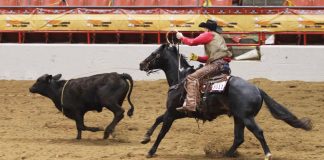Looking for more information on the National Animal Identification System (NAIS)? The Equine Species Working Group (ESWG) has released the second edition of an informational booklet titled: NAIS and Horses: The Facts Surrounding the National Animal Identification System and the Horse Industry in the U.S.
The ESWG is the designated United States Department of Agriculture (USDA) working group for horses on the issue of NAIS. It is the working group’s responsibility to review and evaluate the NAIS and the possible participation of the horse industry in the program.
The NAIS and Horses booklet contains information on the NAIS under the following sections:
• Introduction
• History of National Animal ID System
• Why Should the Horse Industry Participate in the Development of the NAIS?
• Equine Diseases of General Concern
• Methods of Identification
• Potential Benefits of a National Equine ID Program
• Current Status of NAIS
• Frequently Asked Questions
• Equine Species Working Group Members
“There is a great deal of misinformation regarding the NAIS that has and continues to be spread throughout the horse industry,” says Dr. Jim Morehead, ESWG co-chair. “This booklet is an important resource that attempts to address this misinformation while providing up to date information on the program.”
The booklet has been updated to reflect recent changes to the program, including the USDA’s position that it is a voluntary program. It also includes the ESWG recommendations submitted to USDA in August 2006.
One of the key recommendations made by the ESWG is that no equine movements should be reported. The group proposed that horses moving to premises where a Certificate of Veterinary Inspection (CVI), Brand Inspection, VS-127 permit or International CVI are required should be officially identified and that the records maintained through those currently existing and utilized movement permits capture the high-risk movements that pose the largest threat of spreading disease. Animal health officials would be able to query the state databases in the event of a disease emergency to obtain the necessary records.
If horse owners choose to use microchips for the purpose of official identification, the ESWG recommends use of the ISO/ANSI compatible RFID chip (11784/85, 134.2 kHz) and that RFID reader and scanner manufacturers and suppliers should make an immediate effort to provide readers and scanners that can read ISO/ANSI 11784/11785 microchips, and read or at least detect all 125 kHz frequency companion animal microchips. The USDA has recently announced its endorsement of the ISO standards if an owner decides to utilize RFID technology for NAIS participation.
The NAIS and Horses booklet is available on the ESWG website www.equinespeciesworkinggroup.com.





